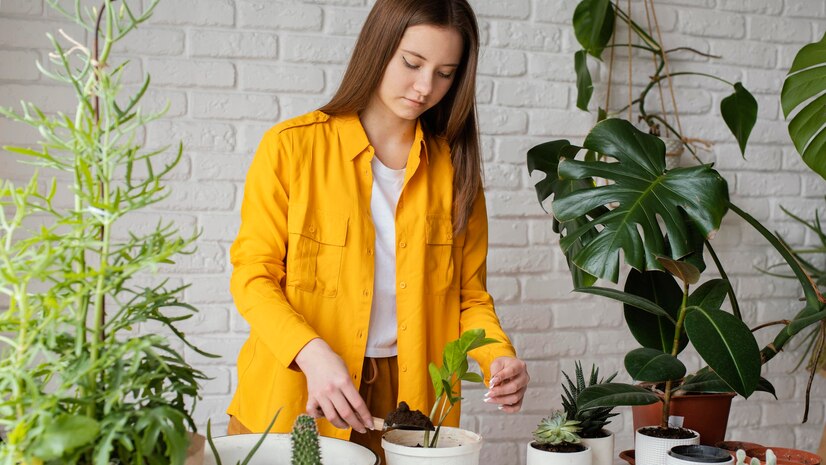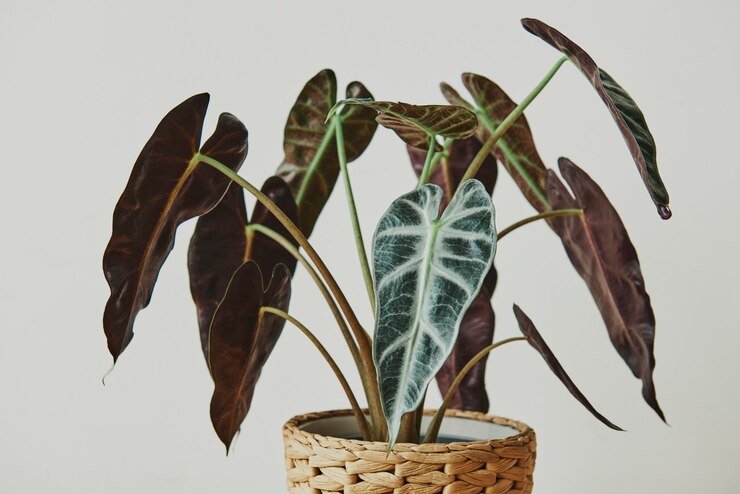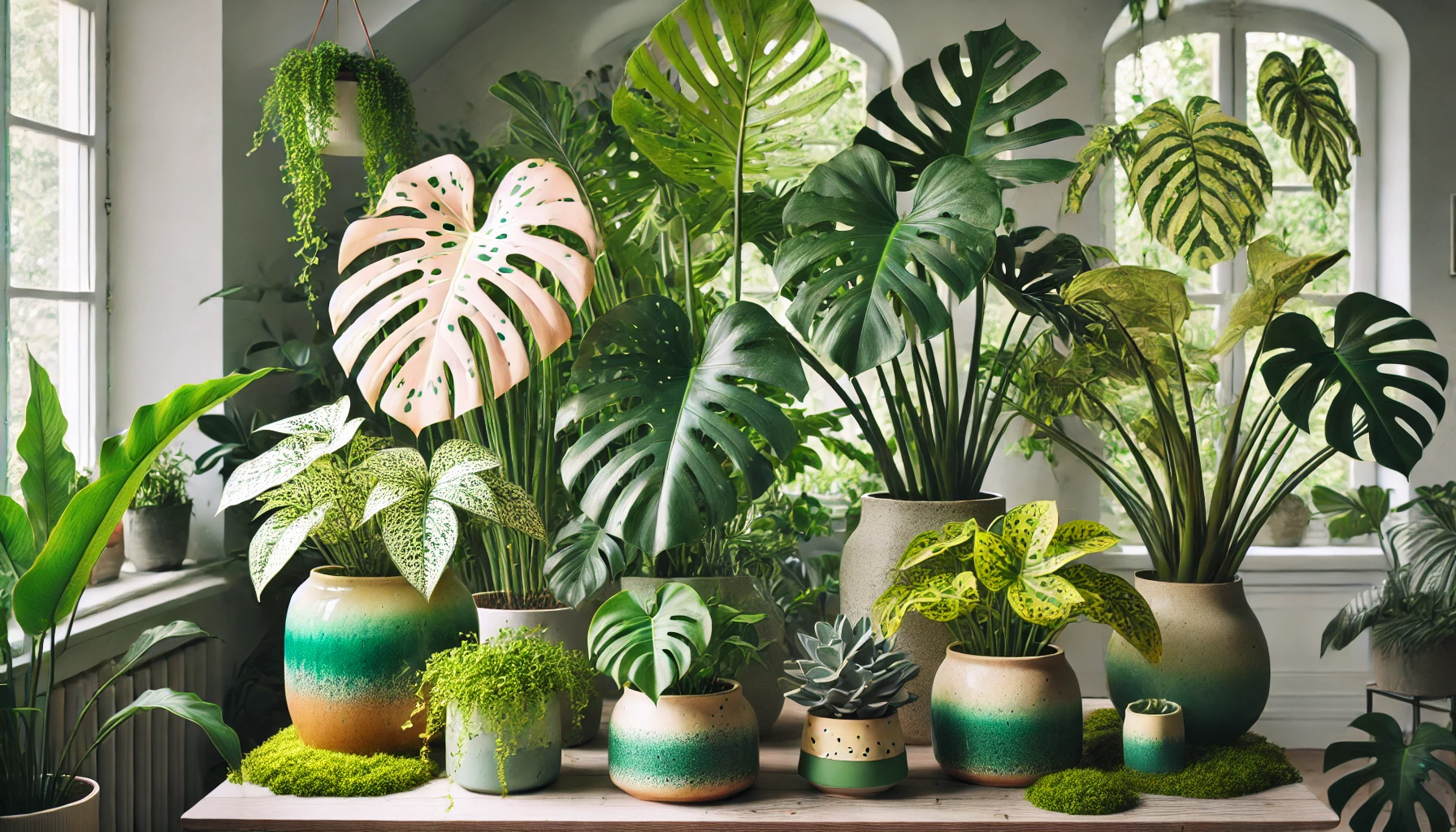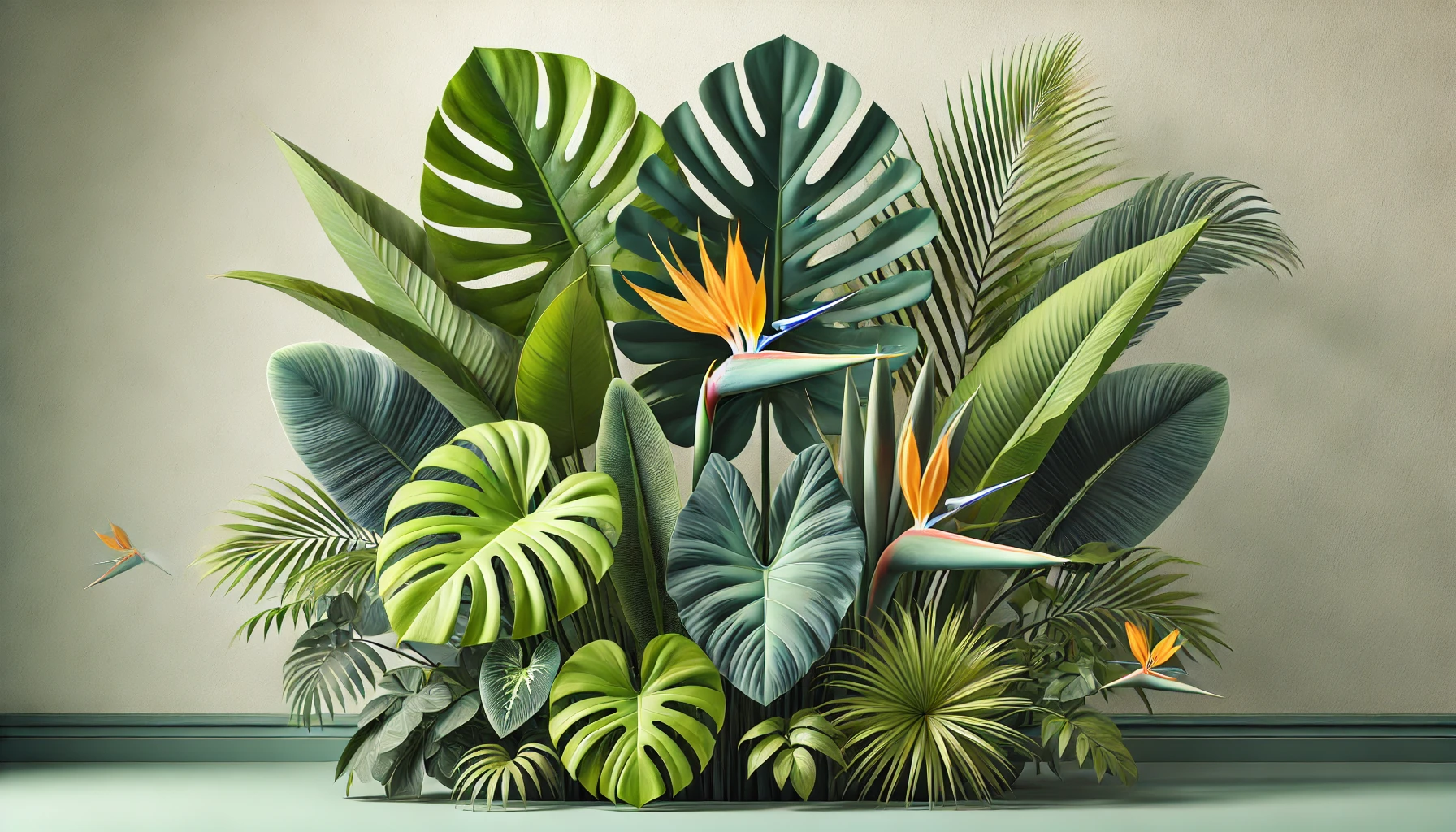Indeed, rare tropical plants lend a touch of individuality and an exotic flair to any room indoors; however, the special care becomes mandatory if they are to thrive fully. These plants, adapted to the lush and humid conditions in rainforests, have very particular special needs when grown indoors.
Understanding and providing their needs for soil, lighting, humidity, and repotting sometimes will spell the difference in their look of health and beauty. Let’s get to a few golden words by experts regarding the care for these botanical treasures in order for them to continue to thrive throughout the year.
A. Best Soil Types for Rare Tropical Plants
Selection of the appropriate soil for tropical plants is important, as it forms the basis on which plants grow. Rare tropical ornamental plants, such as Anthurium, Philodendron, and Calathea, do have growth that requires their potting soils to similarly be like the loose, well-draining soils of their rainforest homes.
A common mistake with tropical plants is the use of regular potting soil, which might be too dense and trap water, causing suffocation of the roots, hence the development of problems like root rot. Instead, try to achieve a mix of airy and moisture-retentive soil to provide adequate oxygenation of the roots while keeping them hydrated.
When preparing or choosing a mix, it is advisable to keep in mind that a proper one would be a mixture of the following:
1. Orchid Bark or Coconut Coir: These elements add an airy, chunky texture to the soil, therefore making root expansion free.
2. Perlite or Pumice: Adding these perlite or pumice increases drainage and negates all possibilities of water pooling around its roots.
3. Peat Moss or Sphagnum Moss: These materials retain moisture but keep the soil damp and not waterlogged.
4. Activated Charcoal: Charcoals absorb toxins in the soil and keep its freshness intact to help avoid fungal growth.
These ingredients, mixed in the right proportion, could give the ideal environment to the plant soil, simulating the natural habitat for the tropical plants. This type of soil is very good for those plants which are susceptible to overwatering, such as rare orchids and Alocasia, since these plants require just the adequate amount of water without getting soggy.
Understanding the Needs of Tropical Plants
Tropical plants are, indeed, a treat for the eyes, with their colorful foliage and exotic flowers. They are originally from warm and humid areas; therefore, their demand from the soil is quite specific. The type of soil required for tropical plants isn’t just any dirt, but an elaborately worked mixture that assures great drainage and yet retaining some moisture. This is rather important, for too much water results in a root rot, while too little water would leave them thirsty and unhappy.
Organic matter is a great starting point when thinking about the type of soil for tropical plants. Tropical plants will do well in an area endowed with richly decomposing leaves and other organic debris that make for a fertile soil type.
This organic matter will help in no small way to modify the structure of the soil and facilitate the easy spread of the roots of such plants to wide areas for better access to water and nutrients. If you want those rare tropical beauties to bloom, then create a mix for them which emulates their natural growing environment!
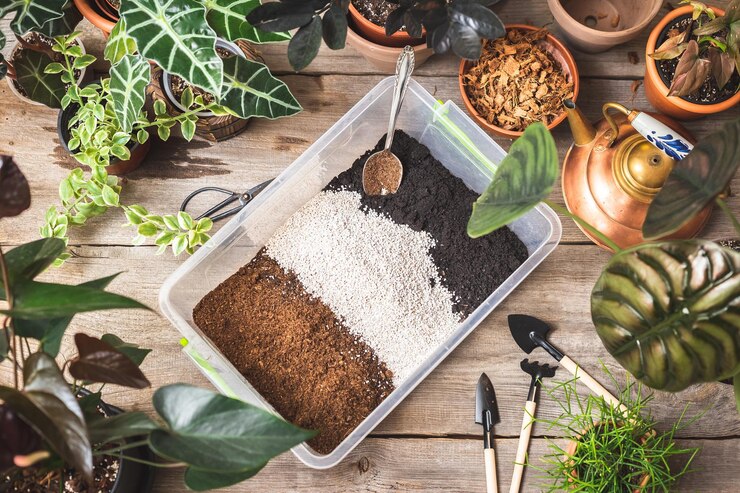
The Enchanted World of Peaty Soil
Peaty soil can easily be considered one of the best soils for tropical plants. This magic mix is highly organic and has very good moisture-retention properties. By composition, peaty soil provides the ideal damp environment for tropical plants like ferns and orchids, which naturally thrive in rainforests. However, one should pay attention to the pH, since peaty soil normally features an acidic pH.
You can prepare a peaty mixture using peat moss and perlite or vermiculite. It retains moisture, but at the same time, it allows for great aeration for the roots. Your tropical plants will thank you for giving them such a wonderful environment to grow in! With proper care, you will be well-rewarded in no time by lush green leaves and stunning blooms.
Loamy Soil: The Darling of Gardeners
Loamy soil is another great choice for best soil for tropical plants. It is often regarded as the holy grail of gardening since it perfectly combines sand, silt, and clay. The special blend offers excellent drainage while retaining enough moisture to keep your tropical plants happy. Loamy soil can be an excellent choice, whether you are growing rare anthuriums or vibrant hibiscus.
Loamy soil is so special because of how versatile it is. You can easily amend it with compost or organic fertilizers to be more specific toward the needs of your tropical plants. You can adjust it to exactly what your plant needs to grow healthily. Just remember not to overdo it; as much as loamy soil is forgiving, you do have to take a little care for your plants’ sake.
Improving the Drainage for Joyous Roots
The best tropical plants soil recipe is all about proper drainage. After all, nobody likes waterlogged roots! To improve the drainage in your mix, you can include something like perlite or coarse sand, which introduces air pockets in the mix that will allow excess water to seep out and yet retain enough to take care of your plants.
If you plant them in pots, use containers that have drainage holes. Such a simple step prevents the water from collecting at the bottom of your pots and giving your plants root rot. Give your rare tropical plants an opportunity to grow strong and vibrant by prioritizing drainage!
Nutrients and Their Role in Plant Health
Nutrients are the most essential elements for your tropical plant’s health. They are in love with a balanced diet, that would contain nitrogen, phosphorus, potassium, and other micronutrients such as magnesium and iron. Soil considered ideal to be used for tropical plants should boast these necessary nutrients in suitable amounts. Most gardeners prefer organic fertilizer or compost to enrich their soil so that their plants get everything to thrive.
Adding nutrition can be as simple as adding well-rotted manure or home compost to a soil mix. This may help in raising the nutrient level and encourage healthy microorganisms which will break down nutrients for better assimilation by plant roots. Your tropical plants will thank you with full growth and brilliant colors .
How to Test Your Soil pH-It’s Easy
Did you know that pH can seriously impact nutrient availability? Most tropical plants prefer slightly acidic to neutral pH, ranging from about 6.0 to 7.0. Some other nutrients may become unavailable if the pH is out of whack, thus depriving your plants of those nutrients. Check the pH of your soil using home test kits available from garden centers; it will take you only a few minutes.
If it turns out that your soil is too acid or too alkaline, there’s nothing to be alarmed about! You’ll be able to correct that with lime to raise the pH or sulfur to lower it as appropriate. In other words, you will be monitoring the soil pH frequently enough so your rare tropical plants get the necessary elements for growth.
Common Mistakes to Avoid
As you get going with tropical gardening, there are a few traps you’ll want to avoid. Probably the most common mistake is overwatering; tropical plants love humidity but no soggy bottoms! Always check the top inch of soil before watering; if it feels dry, it’s time for your plant to have a drink.
Another mistake made by many gardeners is not considering the light conditions. While some tropical plants need bright, indirect light, there are those that like it in shadier areas. Make sure to check out what kind of lighting conditions are required for each plant and put them accordingly throughout the house or garden. Avoiding these mistakes indeed puts you on track to have a booming tropical paradise!
B. Ideal Lighting Conditions for Rare Tropical Plants
Light is needed to grow tropical plants.
Plants need light to grow, much as they need food. For the unusual tropical plants, it is just the right light that makes all the difference in looks and vitality. Most tropical plants in their natural habitat are accustomed to the dappled sunlight filtering through the tree canopy cover. This simply means they generally like bright, indirect light rather than direct sunlight, which may burn up the delicate leaves.
Of course, plants from the tropics would definitely call for great attention to their growth in respect of different light levels. For instance, if your plant’s leaves turn yellow or acquire brown edges, this might be indicative that your plant has been getting too much direct sunlight.
On the other hand, when your plant stretches out and becomes leggy-or does not put out new growth-it may well need more light. Knowing these cues will allow you to create an atmosphere of perfection for dainty foliage and gorgeous flowers.
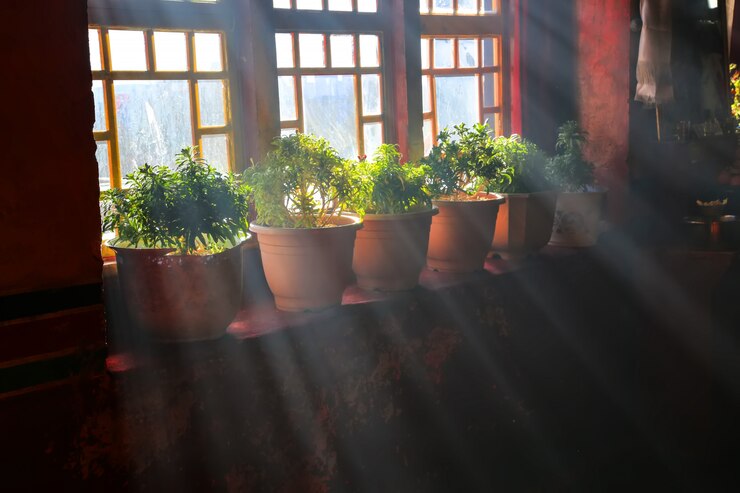
Types of Light: Natural vs. Artificial
When it comes to tropical plants and their lighting, there are two main sources: natural and artificial light. First, there is natural light, favored by many due to its offering of a complete spectrum of different wavelengths, which are necessary during photosynthesis in plants.
Putting your tropical lovelies near the window where bright, indirect sunlight is available can spell wonders. However, be mindful of the time of day, and generally speaking, morning sun tends to be much softer than the intense rays later in the afternoon.
On the other hand, artificial lighting can be an amazing solution for those that may not necessarily have the benefit of much natural light. There are a few different types of grow lights, including fluorescent and LED, although most will provide the necessary spectrum for the plants.
When using artificial lighting, you’ll want to keep your lights on for approximately 12 to 16 hours a day to effectively simulate the natural daylight cycle. This method provides consistency in the lighting of these rare tropical plants, allowing them to grow healthy in less-than-ideal conditions.
Finding the Right Spot: Placement Matters
When you have the answer to the type of light that your tropical plants will require, it is time to place them! Where you are placing these plants makes all the difference in their growth and overall health. It is also very lucky in case you have a south-facing window, which for the most part is the brightest throughout the day.
This is ideal for tropical varieties that basically love the sun. Just be careful with direct sunlight. The usage of sheer curtains helps to disperse it while still letting in plenty of light.
If, after doing so, you find that some areas of your home receive lower light levels, well, don’t you worry! Many tropical plants can put up with various moderate light conditions. These plants are great for areas that receive less sun: snake plants and pothos. You’ll know, through trial and error, which spot in your home is best for each unusual plant.
Dealing with Seasonal Changes
As seasons change, so does the lighting within our houses. During winter months, daylight hours grow shorter, and that may be enough to alter your tropical plants’ growth habits. During these periods, it’s important to keep your plants under observation and change their locations if possible.
If you notice anything with signs of reduced growth or your plants showing any type of stress, relocation closer to windows-or supplemental grow lights-can help with receiving sufficient light.
Also, remember the angle of the sun changes over the year. A spot that was perfect during summer may not give enough light in winter. Ongoing assessments of your plants will help you change with the seasons and keep those tropical beauties happy all year-round.
Understand Light Requirements by Plant Type
In reality, not all tropical plants share the same needs concerning light. Some can live quite well in conditions when the light is poor, while others love super bright light to thrive. Examples are that monsteras and fiddle leaf figs enjoy being in bright indirect lights, while peace lilies will be happy in shady spots. Knowing these varieties and their exacting needs will let you best tailor the care for each plant.
To make things a bit easier, create some sort of chart or even a journal that details the lighting preferences for each plant and any changes you might observe throughout time. That way, you will have a reference to help you keep conditions optimal for your rare tropical plants.
C. Creating Humidity for Tropical Indoor Plants
Humidity is essential for tropical plants to thrive indoors. Most are accustomed to high humidity in their rainforest habitat. In most indoor locations, the humidity is often too low, especially during the colder winter months. If this is too low, it often leads to problems like brown edges or tips.
Why Humidity Matters
These tropical plants originate from humid and lush areas where moisture is not an issue. Most of these beautiful green friends suffer in the dry indoors and end up with crispy leaves or growth that is stunted. By creating humidity for tropical plants, you will be able to recreate their natural habitat and, in turn, help them thrive. Your plants will surely thank you with luscious foliage and vibrant colors!
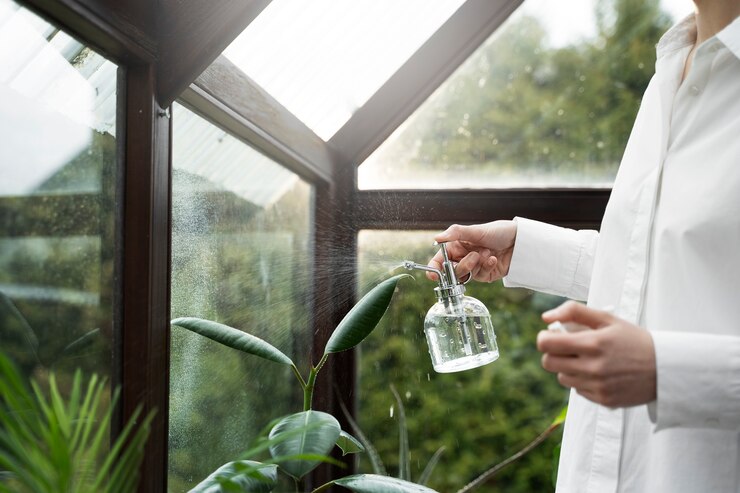
Signs That Your Plants Need More Humidity
Now, how will you know if your tropical plants are craving a little more moisture? Watch for these signs that pretty much give it away:
1. Crispy Leaf Edges: When the edges of the leaves of your plant start to get brown and crispy, this is a pretty good sign that they’re not getting enough humidity.
2. Leaves Fall Off: If tropical plants are in distress due to low humidity, then leaves fall off. If you see this happening, then it’s time to crank up the moisture!
3. Bad Growth: If a plant that had been growing well suddenly stops, then it is probably voicing its discontent with the atmosphere. Raising humidity can help revive its vigor.
Creative Ways to Raise the Humidity
Now that we have learned how essential humidity is to tropical plants, we will cover some of the more fun and not-so-challenging projects to create more moisture in your home.
1. Misting Your Plants
The easiest ways to add some humidity would be just misting your plants with water. Take a spray bottle, fill it with room-temperature water, and lightly mist your plants a few times a week. This not only adds moisture into the air but gives your plant a refreshing drink! Just don’t overdo it, or too much moisture may invite mold to set up residence in it.
2. Use a Humidifier
Get your indoor jungle a humidifier; you will be wowed by this addition. They create nice, misty air for your tropical buddies, making them as cozy as possible. Set up a humidifier near the plants and place it on a comfortable setting-your leafy friends will be happy in no time.
3. Create a Pebble Tray
The pebble tray is a really good and very simple DIY for effective evaporation and thereby increasing the humidity: Just fill a shallow tray with pebbles, add water to it until just below the surface of the pebbles, place your plant pots on top of the pebbles making sure they sit above, not in, water. In this method, as water evaporates, it creates a humid microclimate around your plants.
4. Group Your Plants Together
Plants thrive on company! Grouping your tropical plants together will give them a mini-ecosystem through which moisture is shared in transpiration. The combined humidity from the different plants keeps the air around them moister; hence, it creates some feeling of home for them.
5. Bathroom Bliss
With tropical plants being real lovers of high humidity, put them in your bathroom-if that’s a thing for you! The steam from the showers gives them a natural boost of moisture, creating an ideal environment where your green friend will really thrive. Just remember to let them enjoy the light-near some window-and it will thank you!
Scientific Insights
Now, let’s hear what science says to support our obsession with humidity when caring for plants. According to one study published in the *Journal of Plant Physiology*, “optimal humidity is essential for increased photosynthesis and plant health” (Smith et al., 2019). This study determined that tropical plants grow best when the humidity levels range between 60% and 80%. Okay, let’s get right into that sweet spot!
D. Repotting Rare Tropical Plants Safely
Repotting, while a tropical plant grows, will be requiring fresh soil with extra room to grow its roots. As repotting may cause some stress to tropical plants, careful steps must be taken when the same has to be done.
The following are ways one can safely repot a rare tropical plant:
1. Choose the Right Time: Spring or early summer is considered to be the best time to replant tropical plants because this is the growing season for them, and they would recover pretty fast and grow newer roots in the new soil after repotting.
2. Selecting a Correctly Sized Pot: Transplant the palm into a container that is one size larger than the current container of the palm. Don’t jump too big, since too much soil can retain too much water and cause root rot.
3. Prepare New Soil: Get a fresh and well-draining tropical plant mix as done previously. No old soil should be used, because it might allow the proliferation of some type of infestation or diseases.
4. Loosen Roots Gently: Gently remove the plant from its old pot and loosen the root ball. Remove any dead or damaged roots to ensure a healthy root structure for future growth.
5. Position and Fill: Put the plant in the new pot, centering it. Fill in with new soil around the roots, pressing lightly to secure the plant. Watering after repotting will help the soil settle and reduce transplant shock.
After repotting, set it in an area that is stable in humidity and indirect light without fertilizing for a few weeks. This will allow your plant to acclimate to the new environment you have placed it in, with minimal stress on the plant for healthy root development.
Conclusion
Indoor care of the most unusual tropical ornamental plants will be highly rewarding since it adds vibrancy in green coloration and an exotic feel of beauty to the interior of your home. Choosing the proper soil, along with sufficient lighting, correct humidity, and well-thought-out repotting, you may very well have the right conditions for your tropical plants. Taking the time to understand each plant’s individual needs is a key ingredient in tending an indoor jungle.
According to a study published by HortScience, adding some greenery to your indoor space brings aesthetic appeal and air quality into your home. The tropical plants will add beauty to your home, among many other benefits that are listed here.
These tips incorporated into practice will ensure that your tropical plants remain healthy and strong for years to come, thereby bringing lush, vibrant life into your home.
